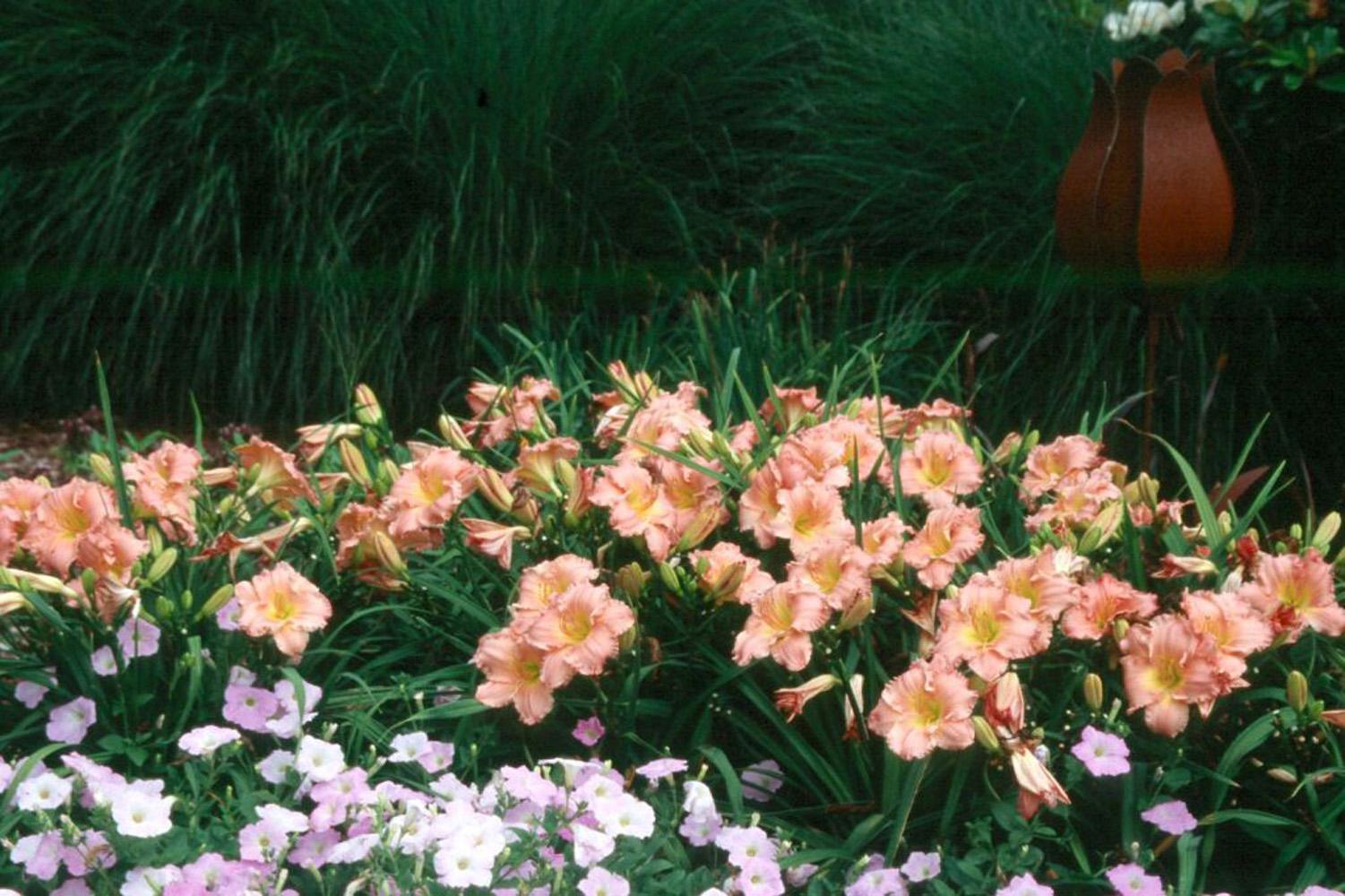Information Possibly Outdated
The information presented on this page was originally released on June 3, 2004. It may not be outdated, but please search our site for more current information. If you plan to quote or reference this information in a publication, please check with the Extension specialist or author before proceeding.
Showy daylilies reach star landscape status
By Norman Winter
MSU Horticulturist
Central Mississippi Research & Extension Center
If you thought masses of single-colored daylilies wouldn't put on a show, look around because it's happening everywhere. The daylily has risen to star landscape status, and I'm not just talking about Stella d'Oro.
Whatever color scheme you want to use, mass-planting daylilies can add sizzle to the flower bed when combined with annuals or perennials, or used in drifts in front of evergreen shrubs.
Don't despair that you've missed your chance for this year when you see daylilies blooming. Instead, take advantage of the blooming daylilies at garden centers &endash; this lets you select the colors, habits and season of bloom to maximize your landscape's floral display.
We need to realize that there are a lot of great daylilies: some bloom early, some mid-season and some late. Some even have repeat blooms, and yes, Stella is the first and probably the last blooming in the landscape. But it is time to branch out, so to speak.
The All American Daylily Council has announced Lady Lucille and Chorus Line as All American Daylilies for 2004. Lady Lucille won the landscape category with its large, showy blooms. Starting off just as most other daylilies are winding down, Lady Lucillle displays a cluster of 5- to 6-inch-diameter, fiery red-orange blooms from summer into autumn. It is pest- and disease-resistant, eye-catching when planted singly and breathtaking in a mass display.
Chorus Line, 2004 winner in the exhibition category, offers a mass of blooms that provide a splendid display of color. These fragrant, well-formed, round flowers with wide, ruffled petals offer 3- to 4-inch blooms of medium pink with a darker rose band around a chartreuse throat. These hearty beauties bloom early in the season and re-bloom up to two times.
There are now more than 48,000 registered daylilies. Incredibly, around 1,400 were registered in 2003. Only eight, however, have won the All-American Daylily award, which began in 1985.
If you haven't tried daylilies because the flowers only last a day, consider that each scape or flower stalk has many buds. These buds open in a series, giving you beauty for not only days, but weeks and even months if they repeat.
Daylilies require at least six hours of direct sunlight each day for best performance. Best results are obtained from raised beds rich in organic matter. Almost every problem call I get on daylilies is a result of planting the flowers in soggy soils.
Be sure to add a good layer of mulch to hold moisture, keep the soil cool and prevent weeds. When it comes to mulch, I am a pine straw nut, but I have to admit that a layer of the new red pine bark mulch around a daylily loaded with blooms is a wonderful sight.
Daylilies are best planted in the early spring or fall, although container-grown plants can be planted throughout the growing season with outstanding success. So shop now while they are blooming and pick the color and form that is most appealing.
Mixing daylilies is still fun, but the trend is massing the single colors. Try it this weekend and see if you don't agree that the daylily is the star of the garden.



